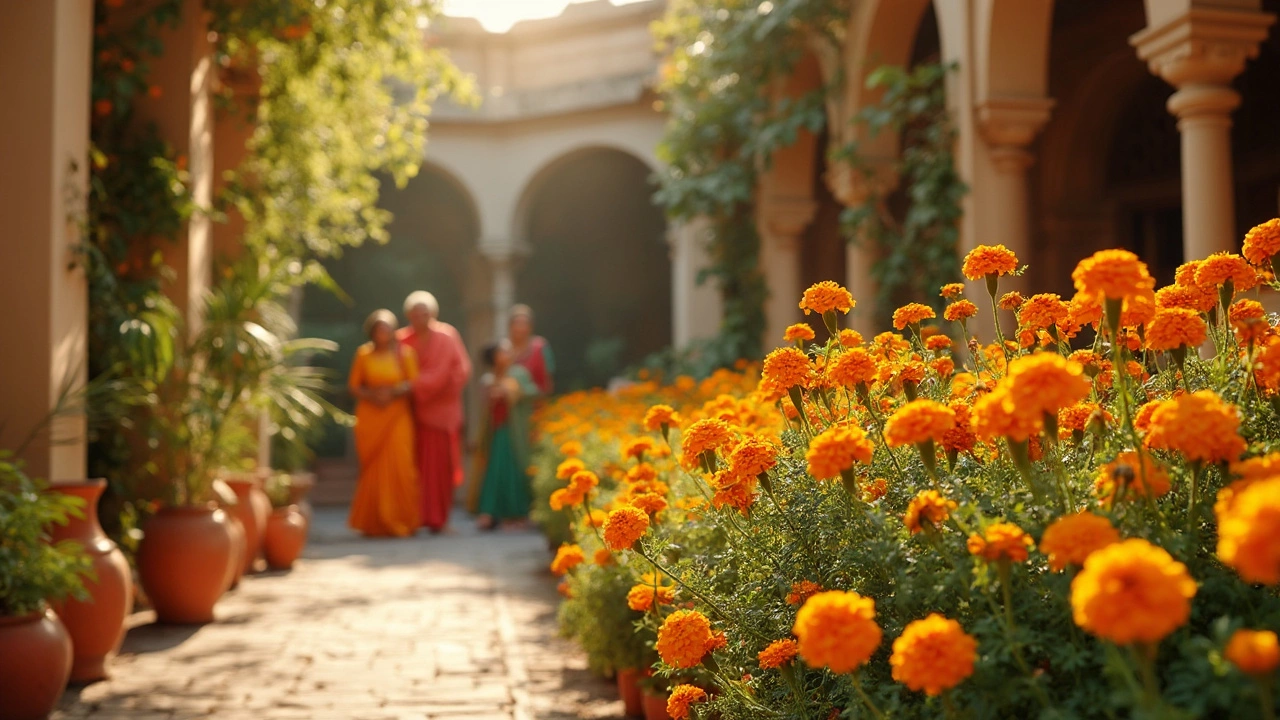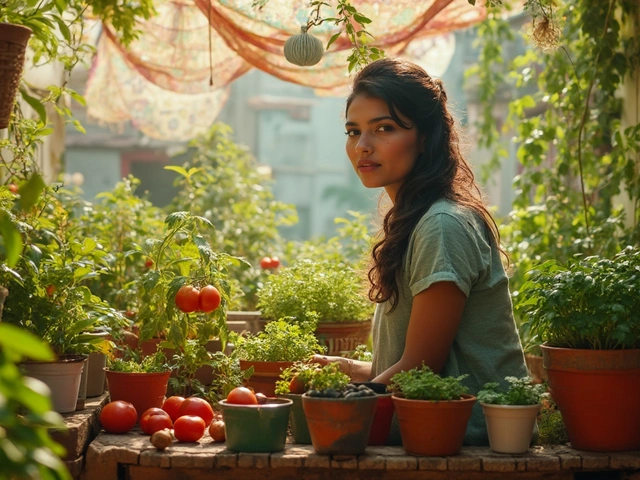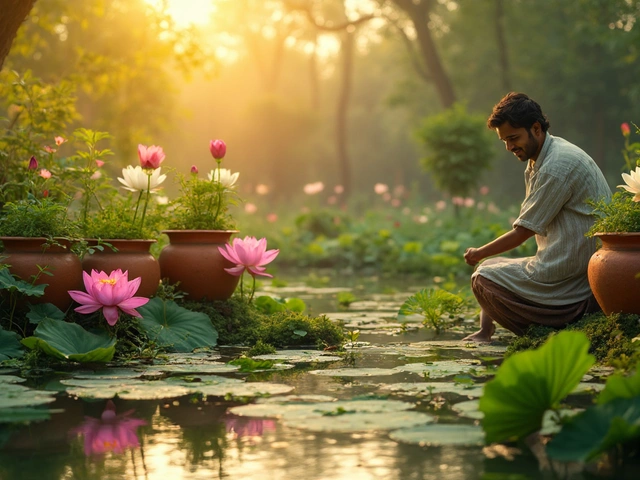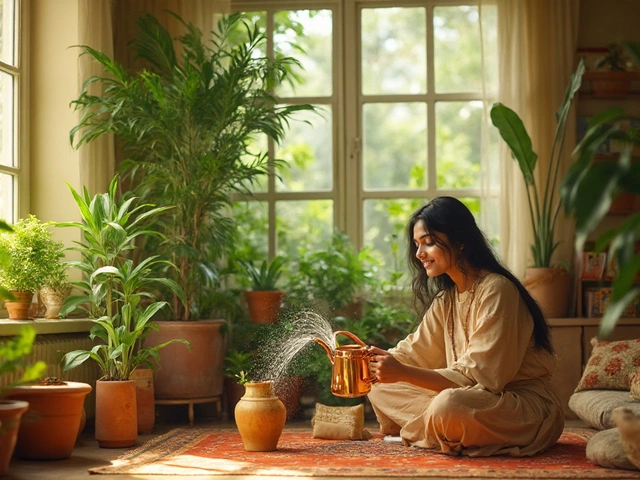Walk through any busy Indian market or peek into a festive wedding, and the marigold is everywhere—strung up in bright orange and yellow garlands, clumped in temple offerings, or swaying in home gardens. The marigold isn’t just a favorite because it looks good. It’s practical, hardy, and super easy to grow, even if you forget to water it half the time.
People in India love marigolds for more than just their color. These flowers hold a special place in festivals like Diwali and Dussehra, and even work double-duty in gardens by chasing off common pests. That’s not just talk—gardening groups all over India swap marigold seeds every spring because they know these plants get the job done with almost zero fuss.
- Marigold: The Unquestioned Favorite
- The Many Uses of Marigolds in Indian Life
- Growing Marigolds—Simple Tips for Beginners
- Marigold Varieties and How to Choose
- Why Do Marigolds Matter So Much?
- Fun Marigold Facts You Probably Didn’t Know
Marigold: The Unquestioned Favorite
If you ask any gardener which bloom rules the gardens of India, the answer is pretty clear—it’s the marigold. These bright flowers aren’t just a trend; they’re built into everyday life, from street temples to family events. Marigolds have been grown all over the country for centuries, and it’s not just tradition—there’s hard data behind their popularity.
Let’s look at what makes the marigold impossible to beat:
- Marigolds are super easy to grow even in poor soil and tough heat.
- They flower quickly—sometimes in as little as 45 days after sowing seeds.
- Farmers plant them between vegetables because marigolds keep harmful bugs like nematodes and aphids away.
- The color stays strong, even after picking. That’s why they’re everywhere during festivals.
- They don’t need fancy fertilizers or constant attention.
Just how popular are marigolds across India? Here’s a look at some numbers:
| State | Main Marigold Season | Tons Produced (2023) |
|---|---|---|
| West Bengal | October-November | 62,000 |
| Tamil Nadu | Year-round | 45,500 |
| Karnataka | June-December | 44,000 |
| Andhra Pradesh | Year-round | 33,000 |
That’s a ton of marigolds—literally! And it’s only counting main flower-farming states. If you added up all the home gardens, the number would be way higher.
Supermarkets, temple markets, weddings, food stalls—you’ll spot marigold chains just about everywhere. And since they last for days in water, everyone from street vendors to big event decorators keep them on hand. If you’re thinking about what to plant in your own Indian garden, marigold is the safe, fuss-free pick.
The Many Uses of Marigolds in Indian Life
It’s wild how the marigold has its fingerprints all over Indian life. You see them at temples, weddings, festivals, even on street corners strung up in long garlands. Their importance goes way past just adding color to an event or backyard.
The most obvious use? Religious rituals. Marigolds are offered to Hindu gods daily—think piles of fresh flowers placed on shrines, covering statues, or used in pooja thalis. The reason? They’re easy to get, they look fresh for hours, and they’re considered pure and auspicious. During Diwali, every other doorway is framed by marigold garlands—people believe this helps invite good fortune and keeps bad energy out.
Weddings without marigolds just don’t feel right in most parts of India. From the haldi ceremony to decorating mandaps and wedding cars, these blooms show up everywhere. They’re sturdy, don’t wilt easily—a big plus when you have functions that stretch for days in the heat.
A lot of folks don’t realize marigolds get used outside celebrations and spirituality too. Farmers plant them along field borders to fight off nematodes and aphids. Many home gardeners use marigolds as a natural bug-deterrent, especially near tomatoes and chilies. You’ll even find marigold extract in some traditional remedies and beauty products; older generations will tell you about its use in healing minor wounds or skin rashes.
| Common Use | Where You'll Find It |
|---|---|
| Religious Offerings | Temples, Homes, Shrines |
| Festival Decorations | Diwali, Dussehra, Ganesh Chaturthi |
| Wedding Arrangements | Mandaps, Garlands, Cars |
| Pest Control | Farms, Home Gardens |
| Traditional Remedies | Skin Treatments, Balms |
You can’t talk about the most popular flower India loves without pointing out all these practical, everyday uses. If you’re thinking about adding marigolds to your gardening or festival shopping list, you’re not just following tradition—you’re bringing in a flower that works hard behind the scenes too.
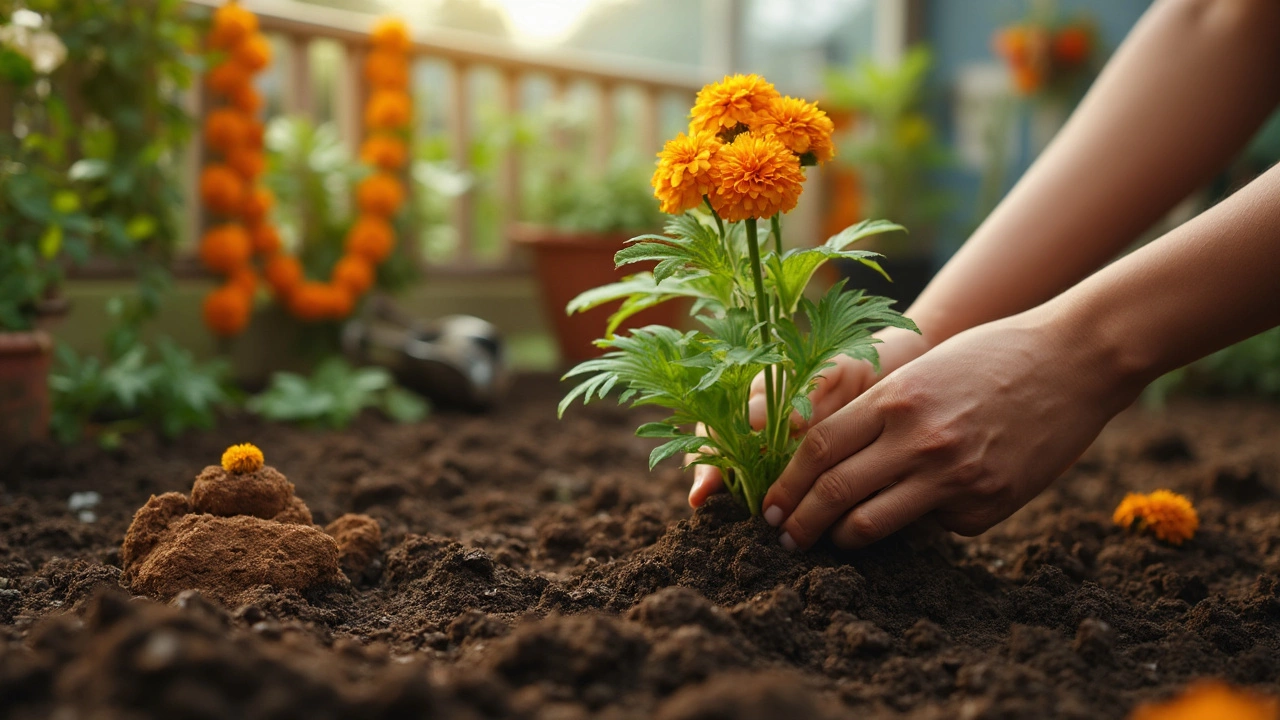
Growing Marigolds—Simple Tips for Beginners
If you’re just starting out in the world of flower gardening India, marigolds should be your go-to pick. Why? They germinate fast, don’t ask for fancy care, and are forgiving if you forget them for a day or two. Here’s how to get the most out of these colorful powerhouses.
- Most popular flower India seeds are cheap—you’ll rarely pay more than ₹20 for a small packet.
- Choose a sunny spot. Marigolds are sun-lovers and need at least 5-6 hours of direct sunlight every day to bloom well.
- If you’re working with regular garden soil, just mix in a bit of compost. No need to splurge on special potting mixes or expensive fertilizers.
- Direct sowing works best: Just poke seeds in 2-3 cm deep and cover lightly. Water gently, and shoots should pop up in 5-7 days during the Indian growing season (usually October-March for best results in most regions).
- Keep soil moist but never soggy—marigolds don’t like wet feet.
Spacing is key. Don’t crowd your marigolds. Leave at least 20-25 cm between small French types and up to 40 cm for bigger African varieties. Plants that are cramped get droopy and attract pests.
Want to get an idea of their tight growth window? Check this out:
| Type | Germination (Days) | First Blooms (Weeks) | Max Height (cm) |
|---|---|---|---|
| French Marigold | 5-7 | 8-10 | 25-30 |
| African Marigold | 6-8 | 10-12 | 60-90 |
One bonus tip: Pinch off the first few flower buds as soon as you spot them. This feels a bit counterintuitive, but it makes your marigold plants get bushier and crank out far more flowers later in the season.
Watch for powdery mildew (that chalky stuff on leaves) and sap-sucking bugs, especially if summer rains hit late. Spraying neem oil or just pruning affected leaves usually does the trick—no need for harsh chemicals.
Wrap it up by collecting seeds from dried flower heads once the blooms are done. Store them in a paper bag, and next season, you’ll have a fresh batch—completely free. Marigolds make flower gardening in India feel easy, even on your first try.
Marigold Varieties and How to Choose
Not all marigolds are the same. In India, you'll mostly run into two big groups: African marigolds (also called Tagetes erecta) and French marigolds (Tagetes patula). Both look pretty similar from a distance but have their own strengths. Picking the right type depends on what you want—bigger blooms, more color options, or plants that handle the heat better.
Here’s a quick comparison to make your choice easier:
| Type | Height | Bloom Size | Main Colors | Best For |
|---|---|---|---|---|
| African Marigold | 60–90 cm | Large | Bright yellow, orange | Garlands, big spaces |
| French Marigold | 20–30 cm | Small | Reddish orange, yellow, bicolors | Pots, borders, edging |
African marigolds are the type you see at most Indian weddings and festivals. Their big, bushy flowers fill up garlands fast. French marigolds are perfect for smaller gardens or if you want to pack a punch in pots along your balcony.
If you care about maintenance, French marigolds need less fussing over. They actually tolerate poor soils better than most plants. African marigolds need just a bit more sunlight and water, but their dramatic size often makes it worth the extra effort.
Love experimenting with most popular flower India in your yard? Try buying seeds for both kinds and see which thrives better where you live. It’s the only way to find your personal favorite. Here’s what to look at when you’re shopping for marigold seeds or plants:
- Space: Got a big front yard? Go for African marigolds. Limited to pots or balcony railings? French marigolds will do better.
- Heat and rain: African marigolds don’t mind blazing sun, but they can droop during heavy monsoon. French ones hold up fine in rain, but don’t cook them in harsh sunlight all day.
- Color and look: If you want more color combinations, French marigolds win. If you just want big, yellow blooms, stick to African types.
One more tip: Whenever you buy marigold plants at a nursery, check the leaves. Healthy marigolds have perky leaves and tight buds. Avoid plants with wilting or spotted leaves—they probably won’t last long.
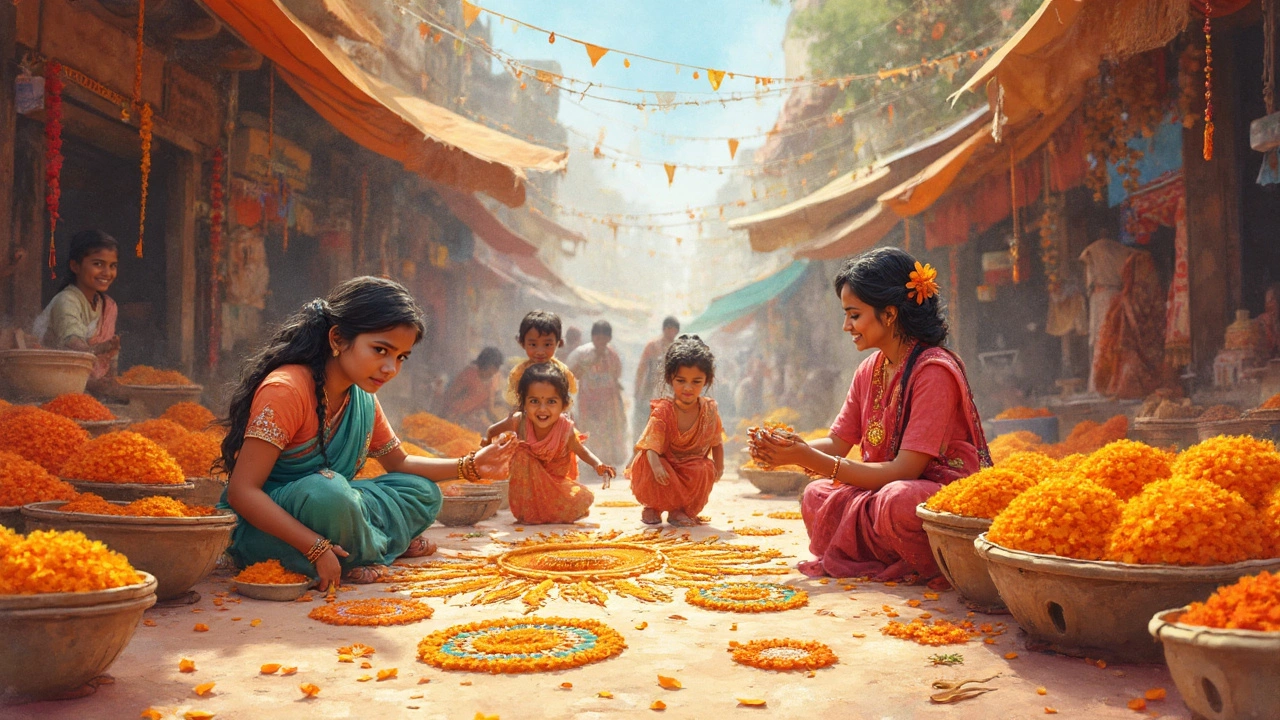
Why Do Marigolds Matter So Much?
The marigold is more than just a pretty flower in India—it's a superstar in daily life, religion, and even gardening hacks. When you think most popular flower in India, it’s marigold right at the top. Want proof? Check any festival: marigold garlands hang on doors and idols everywhere, especially during Diwali and weddings. They're used not just for looks but for their scent and because people believe they keep away negativity.
For farmers and backyard gardeners, marigolds are like the secret weapon. These flowers don’t just look good—they help protect crops. Studies by the Indian Institute of Horticultural Research showed marigolds planted near vegetables can cut down root-knot nematode damage by up to 60%. That’s massive.
- Marigolds are famous for keeping aphids, mosquitoes, and even whiteflies at bay.
- They're easy to grow in pretty much any Indian climate, from Rajasthan’s heat to the drizzle in Kerala.
- Because they bloom almost all year, they’re a steady source for markets and temple needs.
Here’s how big the marigold game is: India grows over 160,000 tons of marigolds every year, mainly in Karnataka, Tamil Nadu, and West Bengal. That’s a lot of orange and yellow! Check out this quick look at marigold stats:
| State | Annual Production (tons) | Main Uses |
|---|---|---|
| Karnataka | 44,000 | Worship, weddings, pigment |
| Tamil Nadu | 36,000 | Temple, garlands |
| West Bengal | 27,000 | Festivals, export |
Plus, marigolds aren’t just for tradition. Pharma companies even use the petals for making medicines and cosmetics, since they’re packed with antioxidants and lutein (yep, the same stuff in eye supplements). In short, these flowers make life look better, feel safer, and even taste better—marigold petals sometimes sneak into local drinks and snacks.
So whether you call it genda or tagetes, the most popular flower in India is a champ in more ways than one. It’s the workhorse of Indian gardens—and a symbol of celebration all over the country.
